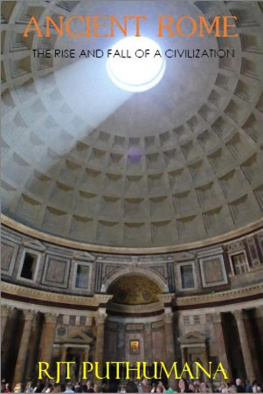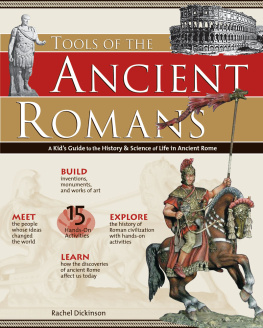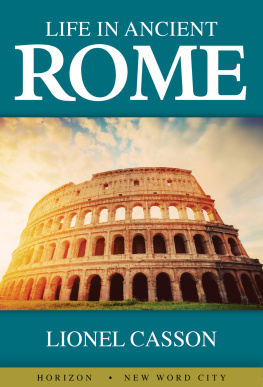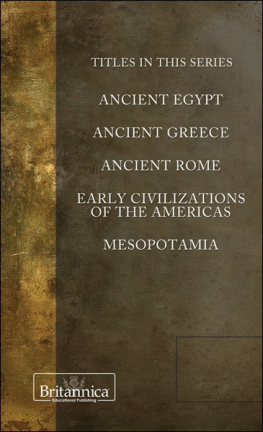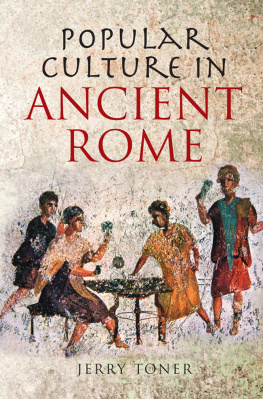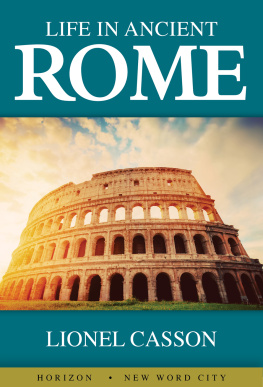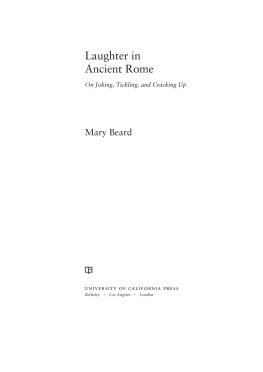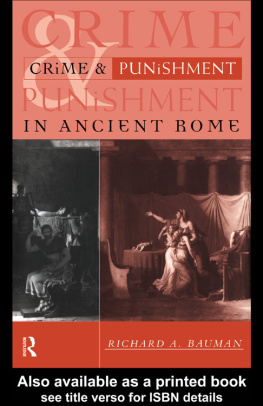CHRISTOPHER FRANCESE




THE BRIEF WORD HISTORIES in this book are meant to provide background on some words that everyone learns when they study Latin, as well as some rarer terms that tell interesting stories about Roman culture. The initial inspiration came from Allan Metcalf and David K. Barhart's America in So Many Words: Words That Have Shaped America. This enjoyable hook lists a new word or phrase that came into American English every year from 1751 to 1998, with a selection of early additions from 1497 to 1750, and discusses the history behind the adoption of each, from buffalo (1633), and cruller (1818), to jambalaita (1872), dude (1877), blues (1911), and "go postal" (1994). It struck me that nothing existed for Latin that similarly combined history and philology in a relatively lighthearted and accessible way. I also remembered that the most successful parts of my own Latin classes are not my spellbinding explanations of the ablative absolute but the stories I tell to try to make the new vocabulary more memorable. I hope that all teachers and students of Latin can benefit from the slightly more formal, but still anecdotal, approach taken here to some key words in the Latin lexicon.
It was immediately clear that the chronological presentation of Metcalf and Barnhart was impractical for Latin. The evidence does not permit it, since only in rare cases (as with paganus or fornix) do we know anything about exactly when a new word, or a new sense of an old word, came into the language. Secondly, Latin, or written Latin at least, which is all we have to go on, is far more conservative than English in its adoption of new words. The vocabulary and grammar of written Latin is recognizably consistent, with some interesting changes, over a period of seven hundred years or more, from (to take very approximate dates) around 200 BC to AD 500. Read some English from even two hundred years ago and the extent of Latin's stasis will become clear. New words could crash the gated community of written Latin only when given approval by poets and scholars, who were generally in no mood to innovate. While this is convenient for us trying to read Latin now, it is an obstacle to seeing the kind of historical development that is so clear in the case of the much better documented and much more porous language of American English.
How, then, to proceed? Advances in scholarship on Roman social history, which have added much to our understanding of ancient Rome in the last thirty years, seemed to recommend a presentation by areas of social life, rather than by chronology or by letters of the alphabet. One of the strengths of classical scholarship has always been its careful attention to language in its social aspects. I have been able to draw on a large body of earlier studies that discuss the cultural implications of distinctive Latin terms in law, poetry, politics, economics, religion, and daily life. Many of the words in this book have had, or probably will one day have, entire books devoted to them. All studies of, say, Roman religion, include information on the precise meanings and implications of key Latin religious terms. Since I have no pretense to completeness, I have simply included a reference or two to some recent or seminal publications that will send the curious in the right directions. Similarly, I have not attempted to provide complete data on all the known meanings of a particular word, something better pursued through the two best Latin dictionaries-the Oxford Latin Dictionary and the Thesaurus Linguae Latinae. Where appropriate I have included exact references to the Thesaurus and other comprehensive reference works that I have consulted.
What I have tried to do is single out the aspects of these words that, while perhaps buried in the dictionaries and specialist literature, might effectively tell some of the central stories of Roman history and culture. I am not, however, under the illusion that these words provide unique keys to understanding the Romans. Indeed quite a few of them show how shifty, deceptive, and downright misleading vocabulary can be. And of course, as the Roman philosopher Seneca points out, "There are a vast number of things that have no name" (Ingens copia est rerum sine nomine). Language is an interesting vantage point from which to look, but it hardly provides a complete or unambiguously reliable view of anything but itself.
My method has been to provide several quotations, in English, that illustrate some key senses of a word or phrase, and then a brief discussion. I hope the quotations are vivid enough to be interesting in themselves. On a few occasions, when the quotation seemed sufficiently pithy or memorable in Latin, I have included the original version as well. But I did not think it necessary to cite full Latin texts for everything, when for the present purpose I am interested in the sense of single words and phrases. For those who want to look up the Latin text of a particular quotation, either to explore the context or to check my translation, I have included exact references. Many of the source texts can be found in the widely available Loeb Classical Library, and I have generally tried to cite those editions. Fronto's Letters for example, are cited by Haines's Loeb, though Van Den Hout's Teubner edition (1988) is the scholarly standard, and I have used this text to translate from. For those without access to a large library, many of the texts, even fairly obscure ones, can be found in electronic form at the well-maintained Web site The Latin Library (www.thelatinlibrary.com). Some Christian and other post-classical texts not found there can be browsed at a rich site called Bibliotheca Augustana, maintained by Ulrich Harsch (www.fh-augsburg.de/-harsch/a_chron.html). Finally, Latin inscriptions are being comprehensively collected at the online Epigraphische Datenbank Heidelberg, by a team under the direction of Christian Witschel (www.uni-heidelberg.de/institute/sonst/adw/edh/index.html.en).
I have tried to choose quotations that are striking, that come from a variety of eras and authors, and that illustrate as concretely and Unambiguously as possible the various important senses of each word. Again, I have not aimed at a comprehensive treatment of all senses, nor a scientific or chronological presentation of material, as in a dictionary. Nor was it my intention, in the beginning, that Seneca the Younger turn up as often as he does in the final result; but he is just extremely quotable. When I refer to Seneca without further qualification, I mean the essayist and philosopher who was Nero's tutor. His father, the writer on rhetoric, is here called Seneca the Elder. I have appended a list of authors quoted with their dates, so far as those can be determined; further information on just about everyone quoted can be found in the Oxford Classical Dictionary.



